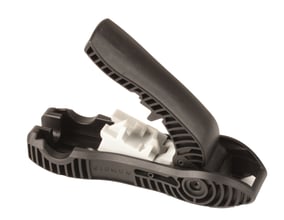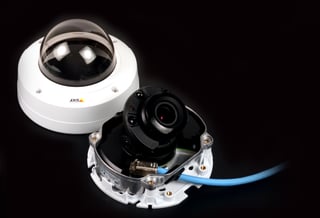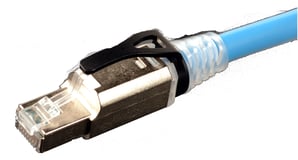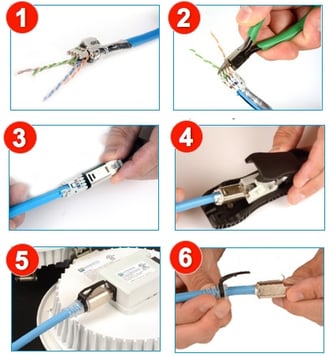Network infrastructure pros are well aware of the revolution happening inside the walls and ceilings of modern buildings, and they know what is driving it. It’s the advent of intelligent buildings – the Internet of Things – where virtually every device is connected to the network cabling infrastructure, allowing building systems to communicate via Internet Protocol. And thanks to advancements in PoE technology that cabling infrastructure is often expected to go beyond data communications, directly delivering low-voltage power to end devices.
In a traditional network infrastructure, horizontal cables terminate to work area outlets, with equipment connections made via double-ended patch cords. While this configuration is very commonly used is intelligent buildings to connect IP devices such as PoE lighting, security cameras, wireless access points, digital displays, and building automation controls, it is not always the most efficient method.
Theoretically, IP end-devices can be connected using plug-terminated links. In the simplest terms, installers can field-terminate an RJ-45 plug directly to the horizontal cable. This eliminates additional work area outlets and patch cords, enabling custom-length cables that can be terminated on site for quick connections directly to end devices.
This “straight to the point” configuration offers a range of potential benefits, such as:
- Enabling more rapid deployment of IP devices
- Simplifying project BOMs
- Cutting products costs
- Improving security by eliminating patch cords that can be easily disconnected from devices like surveillance cameras.
However, despite the market availability of field-terminable plugs, the wide adoption of plug-terminated links has, to date, been limited by a number of factors - most critically performance limitations and ease of use. Again, in the simplest terms, these plugs did not perform as well as the traditional outlet and patch cord configurations and were difficult to terminate.
But today, thanks to innovations such as Siemon’s new Z-PLUG, the benefits of plug-terminated links for high performance, direct connections to IP devices may be realized.
In terms of performance, Z-PLUG delivers a high level of 10 Gigabit system transmission performance and supports advanced Power over Ethernet. In fact, where switching from the traditional outlet and patch cord device connection to a plug-terminated link once forced cabling pros to sacrifice performance, deploying Z-PLUG to eliminate additional outlets and patch cords can actually improve transmission performance and enable more efficient power delivery.
Z-PLUG also delivers excellent flexibility, supporting the most common cabling types and configurations in a single product/part number. Z-PLUG can be quickly terminated to shielded and UTP, solid and stranded Category 6A and Category 6 cables in conductor sizes from 22 to 26 gauge, allowing it to be easily deployed in a wide range of projects and applications. To further improve usability, all Z-PLUG components can be plenum-rated for use in air handling spaces.

In addition to application flexibility, the Z-PLUG’s innovative termination process significantly reduces termination time while simultaneously helping ensure repeatable connection performance. This contractor-friendly, intuitive termination process centers on Siemon’s hand-held, ergonomic Z-PLUG tool. The steps are extremely simple:
- Strip the outer cable jacket and lay the conductors into the Z-PLUG lacing module
- Lace the conductor pairs according to the integrated color-coding guides and trim
- Insert the laced module into the plug housing
- Insert the plug assembly into the Z-TOOL and finalize the termination in one easy motion
- Plug into your IP device!
- Z-PLUG can be disassembled and reterminated up to three times
Z-PLUG can be terminated with or without the optional boot. Coupled with the plug’s rounded corners and reduced-length plug body, Z-PLUG’s ability to “go bootless” make it ideal for connecting devices with limited plug space and depth, such as IP cameras and WAPs.
Other unique features include an optional latch guard that protects the latch during cable routing, provides improved accessibility when unplugging/connecting devices in tight spaces, and supports simple color coding of links through 9 different colors options.
The exponential growth of intelligent buildings and PoE device technology presents an excellent opportunity for network infrastructure professionals: the technology is established, the devices exist, and the volume of network cables needed to support this trend will increase. As such, Z-PLUG’s simple and straight to the point approach to IP end-device connectivity can be a significant advantage.
Learn more about Z-PLUG:





.png?width=58&height=58&name=X_logo_2023_(white).png)
